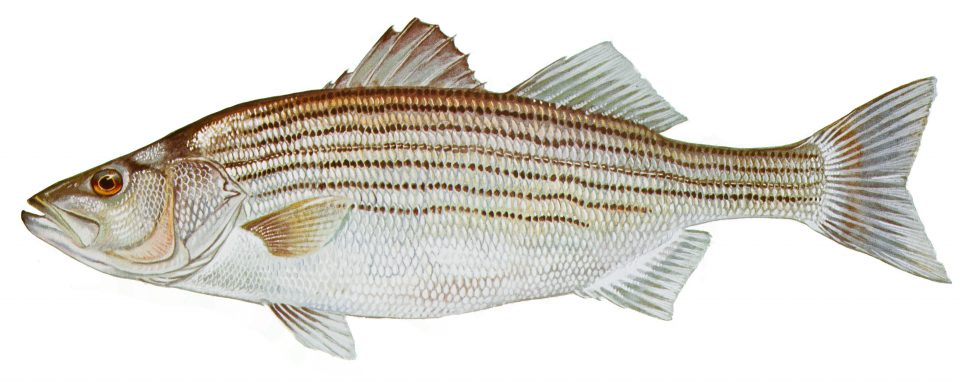ASMFC to Hold Hybrid Hearing in Delaware Sept. 18 on Striped Bass Management Plan

A striped bass. Graphic: Duane Raver Jr. for Delaware DNREC
The Atlantic States Marine Fisheries Commission (ASMFC) will hold a hybrid public hearing from 6 to 8 p.m. on Thursday, Sept. 18 to gather public input on Draft Addendum III to Amendment 7 to the Atlantic Striped Bass Interstate Fishery Management Plan. The ASMFC’s hybrid format will allow the public to participate either in-person at the Delaware Department of Natural Resources and Environmental Control’s Little Creek Hunter Education Center Training Center, 3018 Bayside Drive in Dover or virtually by way of the ASMFC’s broadcast, which can be accessed through the de.gov/dnrecmeetings webpage.
The proposed ASMFC striper management plan action is intended to increase the probability of rebuilding stock to the target level by 2029 by reducing fishery removals by 12% through management measures that would be implemented in 2026. The draft addendum proposes a quota reduction for the commercial fishery while considering season closures and/or size limit changes for the recreational fishery. Specifically for Maryland’s Chesapeake Bay recreational fishery, the addendum also proposes changing the recreational baseline season to simplify Maryland’s Chesapeake Bay regulations, which could improve compliance and enforcement, and to re-align fishing access based on stakeholder input and mortality rates for released stripers.
For commercial tagging, the current fishery management plan (FMP) allows states to choose whether to tag commercially harvested fish at the point of harvest or point of sale. To address concerns that waiting to tag harvested fish until the point of sale could increase the risk of illegal harvest, the draft addendum considers requiring commercial tagging at the point of harvest or first point of landing, with both proposals intended to improve enforcement and compliance.
There is also concern that inconsistent methods of measuring the total length of striped bass for compliance with size limits undermines the intended conservation, consistency and enforceability of coastwide size limits. To address the concern, the ASMFC’s draft addendum to the FMP considers coastwide requirements for defining total length for both sectors.
About DNREC
The Delaware Department of Natural Resources and Environmental Control protects and manages the state’s natural resources, protects public health, provides outdoor recreational opportunities, and educates Delawareans about the environment. The DNREC Division of Fish and Wildlife conserves and manages Delaware’s fish and wildlife and their habitats, and provides fishing, hunting, wildlife viewing and boating access on more than 68,000 acres of public land. For more information, visit the website and connect with @DelawareDNREC on YouTube, Facebook, Instagram, X (formerly known as Twitter) or LinkedIn.
Media Contacts: Michael Globetti, michael.globetti@delaware.gov; Nikki Lavoie, nikki.lavoie@delaware.gov
###
Legal Disclaimer:
EIN Presswire provides this news content "as is" without warranty of any kind. We do not accept any responsibility or liability for the accuracy, content, images, videos, licenses, completeness, legality, or reliability of the information contained in this article. If you have any complaints or copyright issues related to this article, kindly contact the author above.
